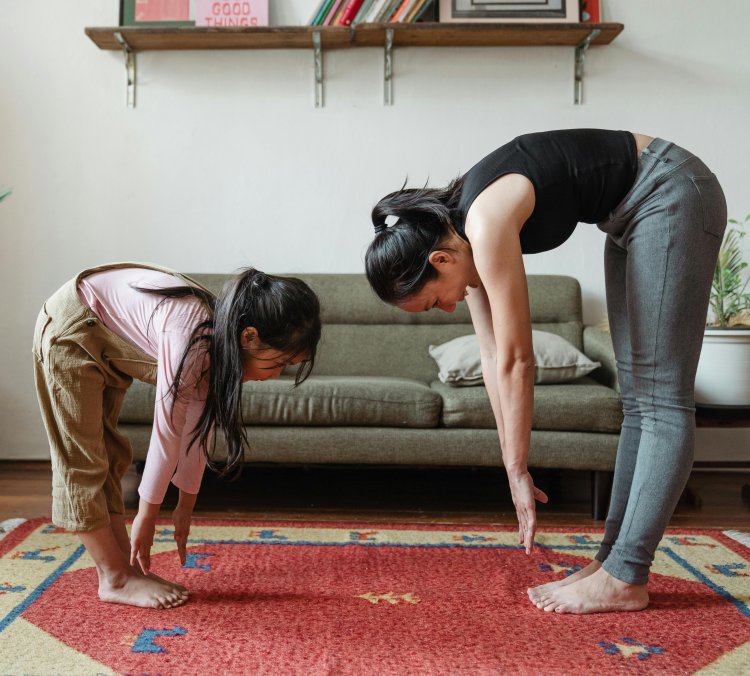Unlocking Flexibility: Key Stretches to Boost Mobility

Mobility is the foundation of an active, pain-free life. Whether you’re an athlete, a desk worker, or simply someone who wants to move with ease, incorporating stretches into your routine can transform how your body feels and functions. Unlike flexibility, which focuses on muscle length, mobility encompasses joint range of motion, muscle control, and overall movement efficiency. Below, we’ll dive into the key stretches that enhance mobility, improve posture, and support fitness goals—along with tips to make them part of your daily life.
Why Mobility Matters
Limited mobility can sneak up on anyone. Hours spent sitting, repetitive workouts, or even aging can tighten muscles and stiffen joints, leading to discomfort or injury. Stretching for mobility counteracts these effects by increasing blood flow, loosening connective tissues, and restoring natural movement patterns. It’s not just about touching your toes—it’s about squatting, reaching, and twisting without restriction. For fitness enthusiasts, better mobility translates to improved exercise form, greater strength gains, and faster recovery. Let’s explore the essential stretches to get you there.
Hip Flexor Stretch
Tight hip flexors are a common culprit behind lower back pain and restricted movement, especially for those who sit a lot. To stretch them, kneel on one knee with the other foot planted forward, forming a 90-degree angle. Gently push your hips forward while keeping your torso upright until you feel a stretch in the front of the kneeling hip. Hold for 20-30 seconds per side, breathing deeply. This move opens the hips, improves stride length for walking or running, and eases tension in the lower body.
Cat-Cow Stretch
The spine craves movement, and the cat-cow stretch delivers. Start on all fours, hands under shoulders and knees under hips. Inhale, arch your back, lift your head and tailbone (cow pose), then exhale, round your spine, and tuck your chin (cat pose). Flow between these positions for 30-60 seconds. This dynamic stretch enhances spinal mobility, relieves upper back stiffness, and primes your core for stability during workouts.
Chest Opener Stretch
Rounded shoulders from hunching over screens or weights can limit arm mobility and breathing capacity. Stand tall, clasp your hands behind your back, and gently lift your arms while squeezing your shoulder blades together. Hold for 20-30 seconds, feeling the stretch across your chest and shoulders. This stretch counters forward posture, boosts overhead range of motion, and supports better lifting mechanics.
Hamstring Stretch
Tight hamstrings restrict leg and pelvic mobility, often leading to compensatory strain elsewhere. Sit with one leg extended and the other bent, foot resting against the inner thigh. Reach toward the extended foot, keeping your back straight, until you feel a gentle pull behind the thigh. Hold for 20-30 seconds per leg. This classic stretch improves lower body flexibility, aids in squatting or bending, and reduces injury risk during dynamic movements.
Thoracic Spine Rotation
Upper back stiffness can hinder twists and turns in daily life or sports. Sit cross-legged or on your heels, place one hand on the opposite knee and the other behind you. Rotate your torso, looking over your shoulder, and hold for 20-30 seconds per side. This stretch targets the thoracic spine, enhancing rotational mobility and supporting a strong, aligned posture.
Tips for Success
Consistency is key—aim to stretch 5-10 minutes daily, ideally after a warm-up or workout when muscles are pliable. Move into each stretch slowly, avoiding bouncing, and focus on deep, steady breaths to deepen the release. Pairing these stretches with strength training ensures balanced mobility and stability, maximizing their benefits.
Key Stretches for Mobility
-
Hip Flexor Stretch: Opens hips, improves stride, and eases lower back tension.
-
Cat-Cow Stretch: Boosts spinal mobility and relieves upper back stiffness.
-
Chest Opener Stretch: Counters slouching, enhances shoulder range.
-
Hamstring Stretch: Increases leg flexibility, supports bending and squatting.
-
Thoracic Spine Rotation: Enhances upper back rotation and posture.
Conclusion
Mobility isn’t a luxury—it’s a necessity for a strong, functional body. These key stretches target common trouble spots, helping you move freely and perform at your best. Start small, stay consistent, and watch your range of motion soar. Your joints, muscles, and fitness routine will thank you.